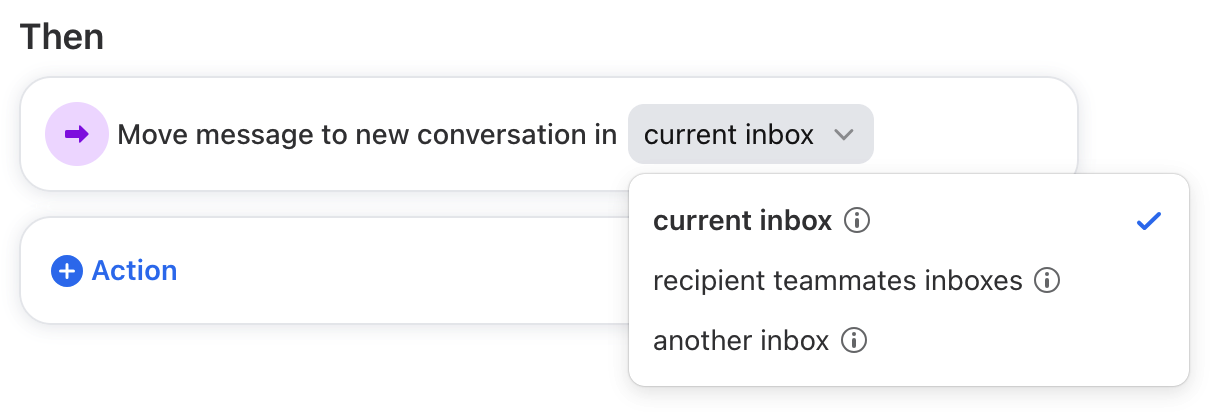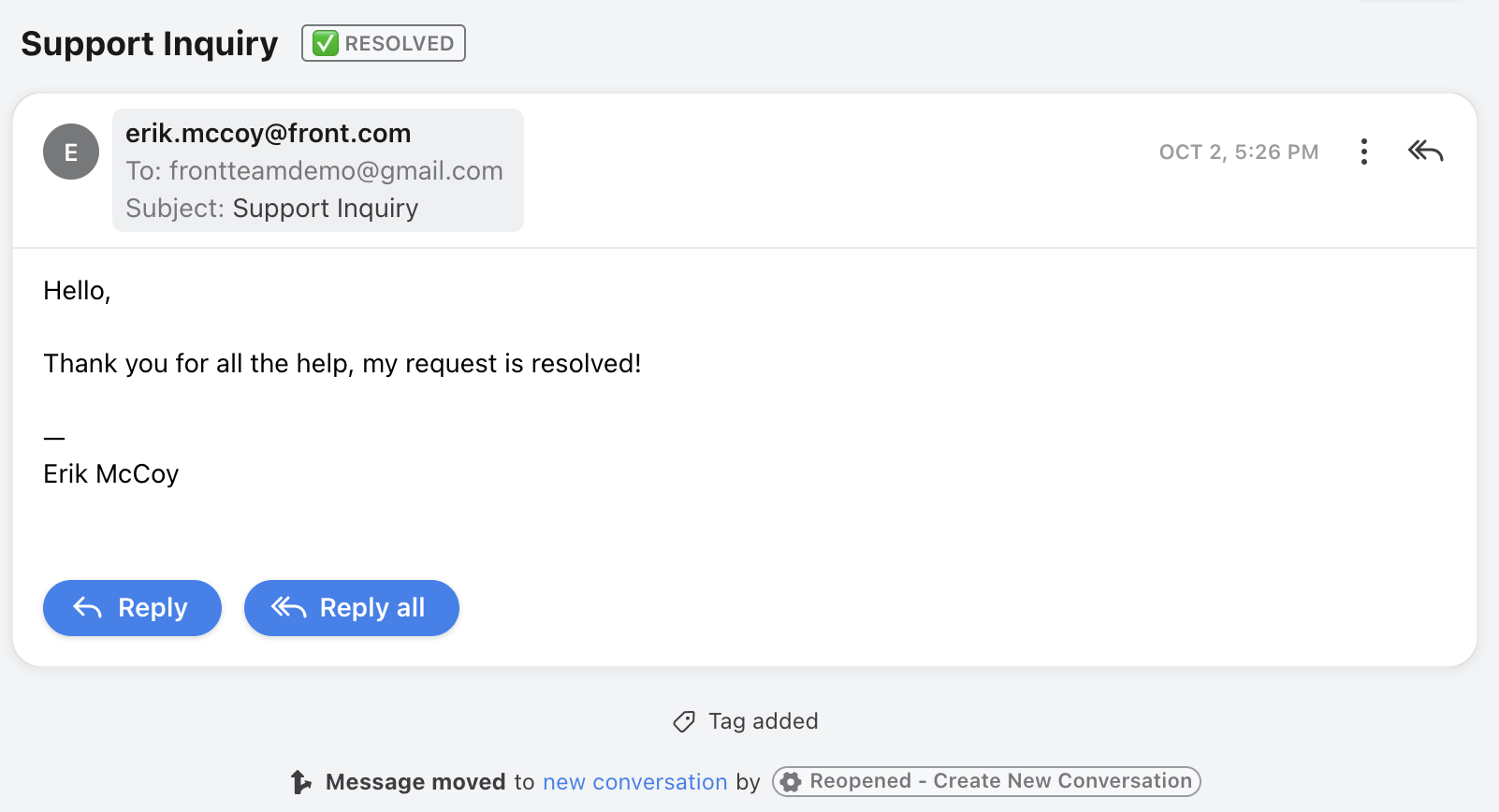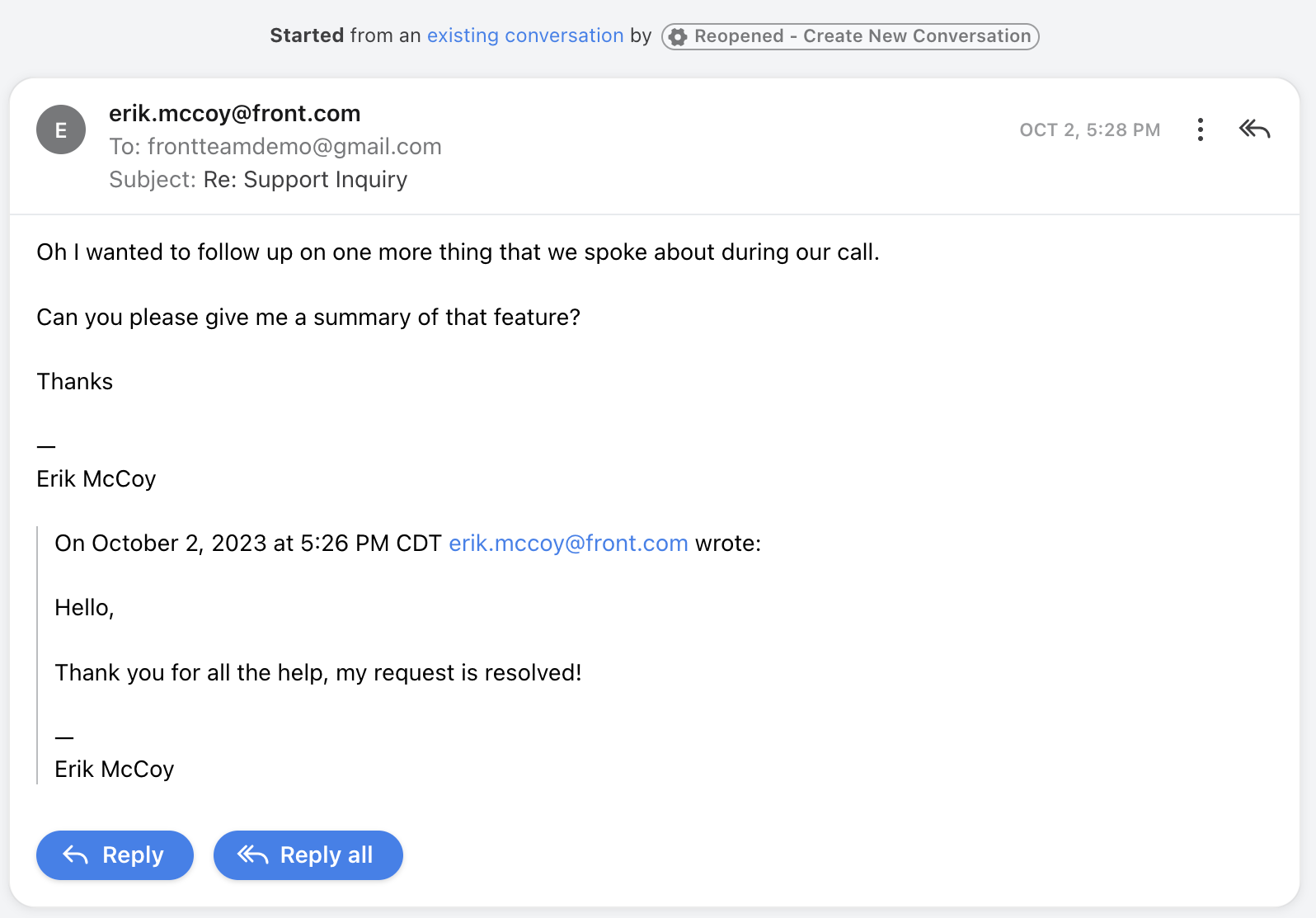Move message to new conversation rule action
Overview
The Move message to a new conversation rule action gives admins a way to automatically separate (or move) messages from a single conversation into its own, creating two distinct conversations.
How it works
When using this rule action, you can choose from three settings that will determine who will be able to access the newly created (moved) conversation. By default, this action will be set to current inbox.
Current inbox
If you select current inbox, the newly created (moved) conversation will be added to the same inbox where the current conversation resides in and will be assigned to the same teammate of the original conversation. On the original conversation, Front will add an activity line that directs you to the moved conversation. Everyone who has access to the inbox will be able to see the conversation.
Original conversation after rule execution:
Newly moved conversation:
Recipient teammates inboxes
If you select recipient teammates inboxes, the newly created (moved) conversation will be moved to the individual inbox(es) of the teammate(s) who are in the recipient list of the new message, thereby restricting access to the conversation to a smaller group of team members.
While the original conversation will show an activity line, only the teammates who are recipients of the new message will be able to see the message. Any other participants on the original conversation will see an access error message when they attempt to click on the link.
This aims to ensure privacy and confidentiality when changes to the recipient list are made by an external party. See this article for an example Smart Rule you can build.
Another inbox
If you select another inbox, the newly created (moved) conversation will be in the shared inbox you select. The moved conversation will be open and unassigned. Only teammates who have access to the new inbox will see the moved conversation.
Triggering other rules
Existing rules will not trigger on the newly created (moved) conversation. However, actions taken on the conversation after it has been created (inbounds, outbounds, tags, comments, etc.) can trigger applicable rules.
Pricing
This feature is available on all the latest plans. Some legacy plans may also have this feature.





